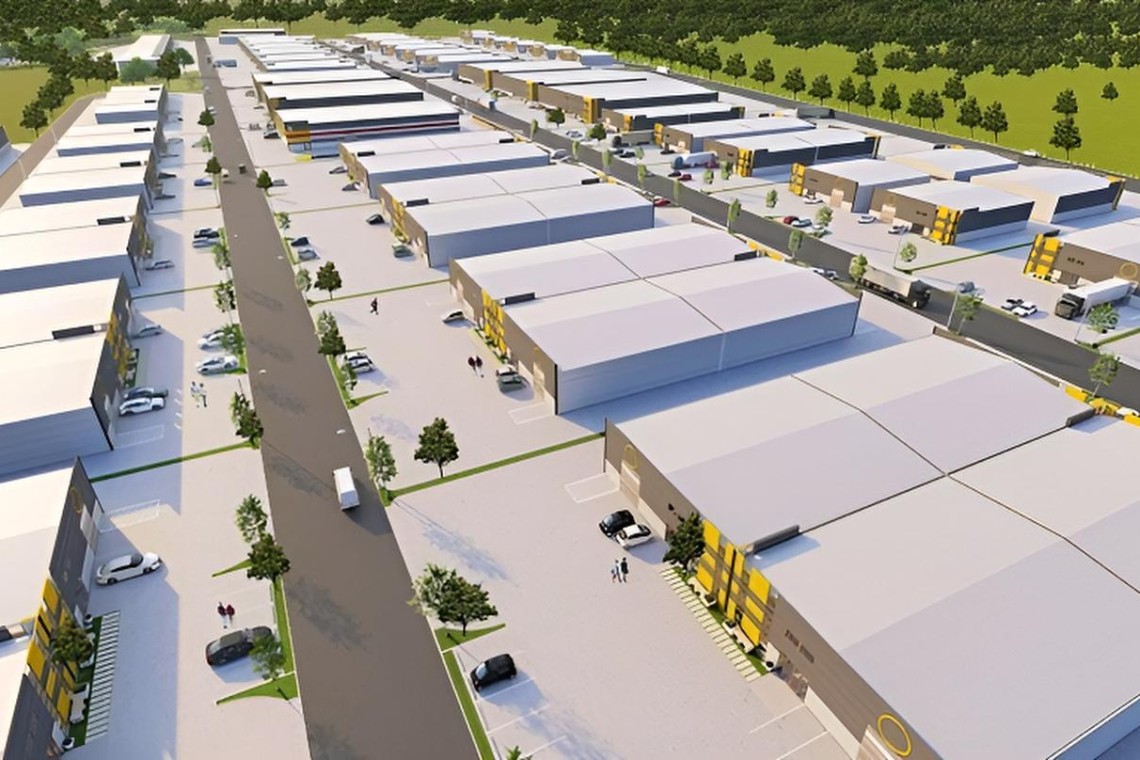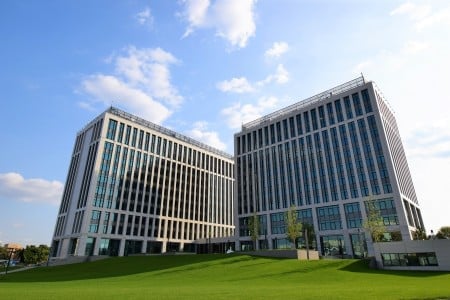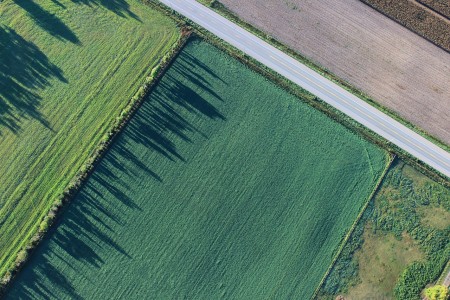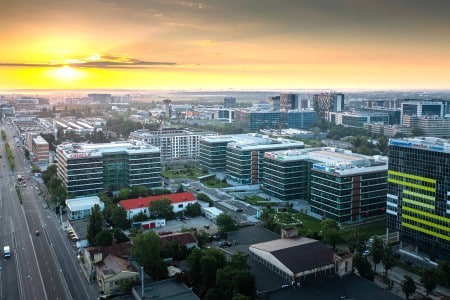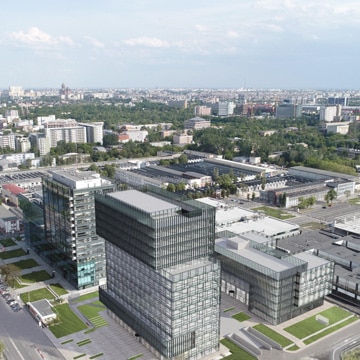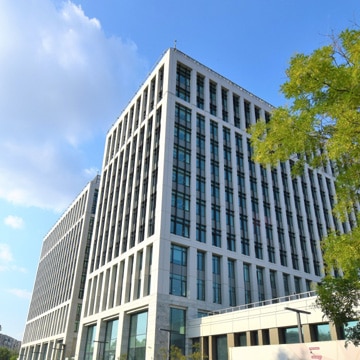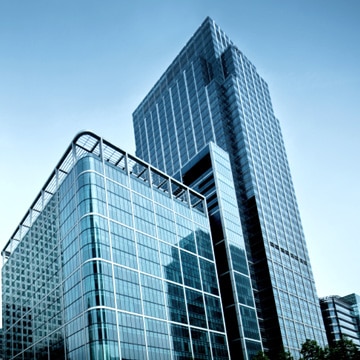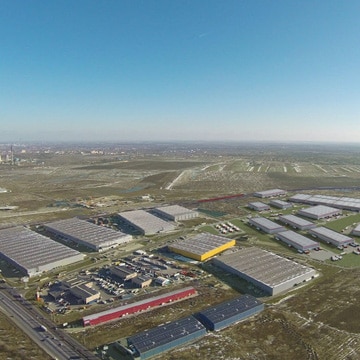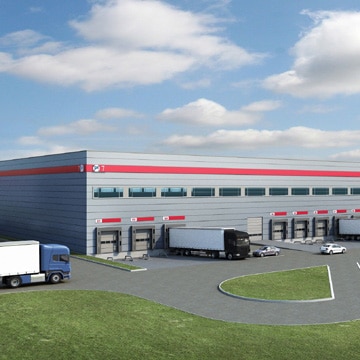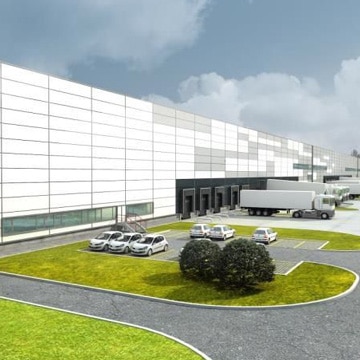Investment Framework and Local Market Specifics
Romania’s commercial real estate market, particularly the industrial and logistics segments, is undergoing a period of accelerated expansion. Market dynamics are shaped by several key factors, including active investments by major players in regional hubs and an increasing focus on sustainability and ESG (Environmental, Social, and Governance) criteria.
This guide has been developed to provide strategic analysis and practical guidance for investors and corporate executives seeking the acquisition of industrial properties in Romania.
Given the complexity of the market, collaboration with a specialized real estate consultant such as ESOP Consulting is essential. Their role goes far beyond simple brokerage, acting as a trusted partner who can provide access to detailed market intelligence, navigate specific challenges, and help optimize the entire investment process.
Romania’s Industrial Property Market – A Strategic Overview
Key Players and Development Trends
Romania’s industrial and logistics market is dominated by a relatively small number of major developers and investors. The most prominent include CTP, WDP, VGP, Eli Park, Logicor, and Olympian, all of whom hold extensive property portfolios across the country’s main economic corridors.
The most active areas are concentrated along the A1 highway toward Pitești, as well as in established industrial hubs such as Timișoara, Brașov, and Ploiești, which continue to attract companies expanding their logistics and production operations.
A growing trend shaping the market is the integration of sustainable development principles. Companies are increasingly investing in green energy solutions and comprehensive ESG strategies as a core part of their operations. This focus aligns with national efforts to reduce energy consumption and adopt innovative technologies—factors that are defining the future of Romania’s industrial real estate landscape.
Major Developers Lease, Not Sell
A defining characteristic of Romania’s industrial market is that major international logistics park developers such as CTP, WDP, and VGP do not sell their parks or individual warehouses. This approach reflects their dominant business model known as “build-to-rent”.
Their strategy centers on developing and managing long-term income-generating assets through stable rental revenues. Selling individual units would fragment ownership, complicate park management, and disrupt the consistent cash flow that underpins portfolio valuation and appreciation. By retaining ownership, developers can ensure high infrastructure standards, safety, and service quality, providing a stable operational environment for all tenants.
For investors seeking to purchase an industrial facility, this means a shift in perspective is required. While large developers rarely sell, the market still offers viable acquisition alternatives. There exists a more fragmented segment where industrial properties are available for sale, typically offered by local developers or private owners. These assets may be standalone warehouses or, in some cases, units within industrial parks that follow a mixed business model including sales. Identifying such opportunities requires specialized access and market expertise, underscoring the importance of working with an experienced broker active in this niche segment.
Acquisition Strategies: Existing Warehouses vs. “Built-to-Suit” / “Built-to-Own” Projects
Purchasing an Existing Industrial Warehouse
Buying an existing industrial warehouse is the most direct way to secure an operational property. In Romania, offers vary in size, price, and quality, from newly built facilities with modern amenities to older buildings requiring refurbishment.
Evaluating such properties goes far beyond area and price. A thorough assessment must consider location, which directly influences logistics costs and labor accessibility. Proximity to highways and major economic centers is a major advantage.
Equally important is evaluating the building’s structure and specifications, including clear height, flooring type (e.g., polished concrete), heating, cooling, and fire prevention systems, as well as security features. Finally, the potential for future expansion must be assessed to ensure flexibility for long-term growth.
The “Built-to-Suit” / “Built-to-Own” Option
For companies with very specific operational requirements, the “Built-to-Suit” (BTS) or “Built-to-Own” (BTO) approach offers an attractive alternative. This model involves the turnkey development of a facility by a real estate developer according to the client’s precise specifications, delivered under two possible structures:
1.Lease with future purchase option – Upon completion, the client leases the facility, retaining the pre-agreed option to buy it later. This structure allows the company to expand its operations without tying up capital during the construction phase.
2.Direct ownership upon completion – The client becomes the property owner once construction is finalized, with the developer managing all project execution and associated risks. This enables the client to remain focused on core business operations.
Land Acquisition and Developing a Custom Project
Choosing the right plot of land is a critical decision that can significantly influence the investment’s success. The first key consideration is whether to buy intravilan (urban) or extravilan (non-urban) land.
• Urban land (intravilan) offers clear advantages: access to utilities and infrastructure, significantly reducing construction complexity and costs. The permitting process is generally faster, with lower risks of delay. However, both acquisition price and local taxes are typically higher.
• Non-urban land (extravilan) may seem more attractive due to its lower purchase price and reduced taxes, but this apparent advantage often conceals hidden costs and bureaucratic hurdles. Such plots usually lack access to utilities and infrastructure, with high connection costs and lengthy approval processes. Moreover, Romanian legislation restricts permanent construction on agricultural (non-urban) land. Converting such land to urban use requires obtaining a Zonal Urban Plan (PUZ), a lengthy and expensive process that can sometimes exceed the initial land cost. A decision based solely on the lower purchase price can therefore lead to significantly higher total investment costs.
Summary of Key Decision Factors:
| Evaluation Criteria |
Existing Warehouse |
“Built-to-Suit” / “Built-to-Own” |
Land Acquisition |
| Delivery Time |
Immediate (short-term) |
Medium to long (6-18 months) |
Long (12-36+ months) |
| Customization Level |
Low (requires reconfiguration) |
Maximum (tailor-made project) |
Maximum (full control) |
| Design Control |
Limited |
Complete |
Complete |
| Initial Costs |
High (full value upfront) |
Low (advance payment only) |
Variable (land cost) |
| Financial Flexibility |
Low |
High (capital not tied during construction) |
Variable |
| Key Risks |
Hidden property risks (technical/legal) |
Developer and delivery timeline risks |
Urban planning and permitting risks |
The Due Diligence Process – The Cornerstone of a Secure Transaction
A successful acquisition relies on a comprehensive due diligence process aimed at minimizing risks. The legal and urban planning review phase is crucial and involves verifying ownership documentation and the property’s legal status.
Beyond the legal aspects, industrial transactions require thorough technical and environmental assessments. Building and land inspections help identify structural or compliance issues, while environmental due diligence ensures the property is free from contamination. Acquiring a site or building with historical pollution from industrial or waste-related activities can result in significant remediation costs.
Essential Due Diligence Documents:
| Document / Verification |
Description and Importance |
| Ownership Title |
The primary document confirming property rights (sale-purchase agreement, inheritance certificate, etc.) |
| Land Registry Extract |
Confirms the current legal status, including encumbrances such as mortgages or litigation. |
| Cadastral Documentation |
Contains site plans verifying boundaries and exact land/building size. |
| Fiscal Clearance Certificate |
Confirms that all local taxes have been paid by the owner. |
| Energy Performance Certificate |
Mandatory by law, classifies the property’s energy efficiency. |
| Building Permit |
Required for new constructions, confirming compliance with regulations. |
| Geotechnical Study |
Analyzes soil characteristics to prevent foundation-related risks. |
| Environmental Due Diligence Report |
Identifies potential soil and groundwater contamination to mitigate financial risks. |
Conclusions and Recommendations
Acquiring industrial property in Romania is a complex process, rich in opportunity but not without its challenges. By understanding both international developers’ business models and the local development landscape, investors can successfully navigate the market and identify viable alternatives, even when properties in major logistics parks are not for sale.
Key recommendations:
1.Explore all available market alternatives – Don’t limit your search to top-tier industrial parks. Consider standalone facilities or “Built-to-Suit” / “Built-to-Own” projects for greater flexibility and investment control.
2.Don’t underestimate due diligence complexity – Incomplete ownership histories or environmental contamination can pose significant hidden risks. Comprehensive legal, technical, and environmental checks are essential. For non-urban plots, factor in PUZ approval and utility connection costs when calculating the total investment.
3.Work with a specialized consultant – In a fragmented market, an experienced broker such as ESOP Consulting offers a significant competitive edge. With access to exclusive or off-market opportunities, the right consultant becomes an invaluable partner for navigating complexity, minimizing risks, and optimizing investment decisions.
ESOP’s portfolio includes, besides warehouses for sale, also business parks, industrial parks, office buildings for rent in Bucharest, land for sale.
Please contact the ESOP team by filling this brief form, or by phone (+4) 0723.26.61.97 or (+4) 021.528.04.40. We’ll promptly answer your inquiry!
